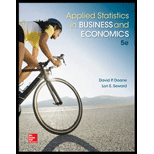
Concept explainers
Define (a) quality, (b) process, and (c) productivity. Why are they hard to define?
(a)
Define the term quality.
Explanation of Solution
Quality:
The quality can be obtained in many ways; the quality is attained when product or service manufactured or delivered with the defined specifications. If the product in the process meets the conformance to specifications of reliability, durability, serviceability, performance and customer’s perceptions, it is said to attain quality.
(b)
Define the term process.
Explanation of Solution
Process:
The sequence of the tasks that are interconnected with each other that results in the manufacturing of the product or delivery of the service, is termed as process.
(c)
Define the term productivity.
Explain why these terms are harder to define.
Explanation of Solution
Productivity:
The measure of efficiency that determines the ratio of the output with respect to input is termed as productivity. If the productivity is high then cost per unit is reduced, profit is increased supporting the higher wages and salaries.
Justification: The terms quality, process and productivity are harder to define because these are not constant and changes from times to time to ensure that the process is in control. And the defined quality or the process might not be as standardized as in manufacturing.
Want to see more full solutions like this?
Chapter 17 Solutions
Applied Statistics in Business and Economics
- A marketing agency wants to determine whether different advertising platforms generate significantly different levels of customer engagement. The agency measures the average number of daily clicks on ads for three platforms: Social Media, Search Engines, and Email Campaigns. The agency collects data on daily clicks for each platform over a 10-day period and wants to test whether there is a statistically significant difference in the mean number of daily clicks among these platforms. Conduct ANOVA test. You can provide your answer by inserting a text box and the answer must include: also please provide a step by on getting the answers in excel Null hypothesis, Alternative hypothesis, Show answer (output table/summary table), and Conclusion based on the P value.arrow_forwardA company found that the daily sales revenue of its flagship product follows a normal distribution with a mean of $4500 and a standard deviation of $450. The company defines a "high-sales day" that is, any day with sales exceeding $4800. please provide a step by step on how to get the answers Q: What percentage of days can the company expect to have "high-sales days" or sales greater than $4800? Q: What is the sales revenue threshold for the bottom 10% of days? (please note that 10% refers to the probability/area under bell curve towards the lower tail of bell curve) Provide answers in the yellow cellsarrow_forwardBusiness Discussarrow_forward
- The following data represent total ventilation measured in liters of air per minute per square meter of body area for two independent (and randomly chosen) samples. Analyze these data using the appropriate non-parametric hypothesis testarrow_forwardeach column represents before & after measurements on the same individual. Analyze with the appropriate non-parametric hypothesis test for a paired design.arrow_forwardShould you be confident in applying your regression equation to estimate the heart rate of a python at 35°C? Why or why not?arrow_forward
 Glencoe Algebra 1, Student Edition, 9780079039897...AlgebraISBN:9780079039897Author:CarterPublisher:McGraw Hill
Glencoe Algebra 1, Student Edition, 9780079039897...AlgebraISBN:9780079039897Author:CarterPublisher:McGraw Hill
 Big Ideas Math A Bridge To Success Algebra 1: Stu...AlgebraISBN:9781680331141Author:HOUGHTON MIFFLIN HARCOURTPublisher:Houghton Mifflin Harcourt
Big Ideas Math A Bridge To Success Algebra 1: Stu...AlgebraISBN:9781680331141Author:HOUGHTON MIFFLIN HARCOURTPublisher:Houghton Mifflin Harcourt


